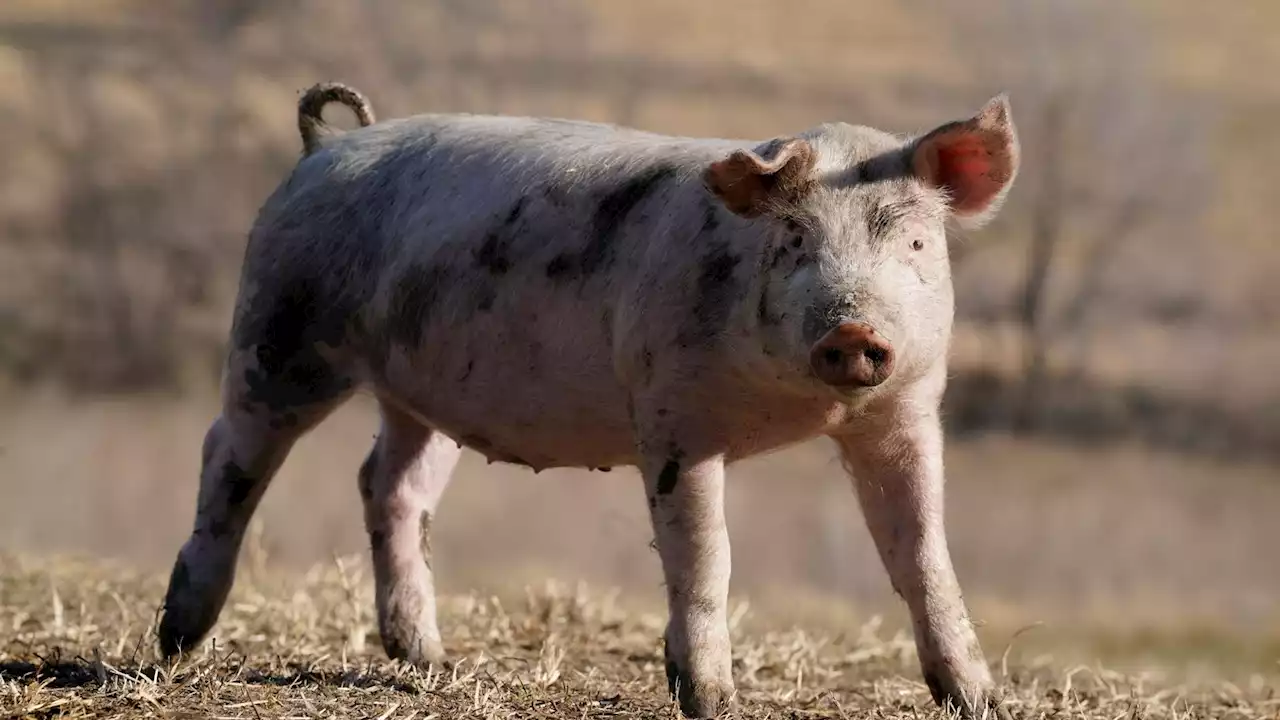How has animal research advanced medicine in the past and is it necessary for the future? animalresearch medicine animalrights health animaltesting
1. Animal Research and Basic Biology4. Mandatory Animal Trials Misleading ResultsFurther Reading
Improved nutrition and hygiene have made infectious diseases much rarer. Yet, this alone does not explain how polio, diphtheria and rheumatic fever have become so uncommon or even eliminated, in some cases. The answer is animal research, which plays multiple roles. Rabbits, for instance, develop atherosclerosis, emphysema and the congenital spinal deformity called spina bifida. And dogs develop cancer, cataracts, diabetes, and coagulation disorders like hemophilia.
Again, every Nobel Prize in Medicine over the last 30 years has been based on science discovered using animal research. Less than one in five Nobel-winning contributions were made without animal experimentation. Animal research led to the identification of malaria as the cause of the “ague”; the treatment for vitamin deficiency diseases like rickets and beriberi; and a plethora of vaccines against deadly and previously untreatable conditions including the plague, cholera, typhoid, meningitis, and rabies – as well as more commonly used tetanus, diphtheria and pertussis vaccines.
Over the last two decades, gene therapy has become a possibility due to animal trials. Currently, it is being tested over a multitude of genetic diseases such as muscular dystrophy and cystic fibrosis. Related StoriesThis is partly responsible for the >90% failure rate of drugs that show preclinical success, including in advanced animal experiments, when tested in humans. This has not been shown to be addressed by inserting human genes; using non-human primates , with their close genetic and physiologic similarity to humans; or standardizing laboratory protocols.
One scientist concludes, “The bottom line is that animal experiments, no matter the species used or the type of disease research undertaken, are highly unreliable—and they have too little predictive value to justify the resultant risks of harm for humans.” Using relevant models Toxicity tests in animals are exemplified by the LD50 , where the dose capable of killing half the animals is reached. Again, the IC50 , was formerly carried out in animals.
Ireland Latest News, Ireland Headlines
Similar News:You can also read news stories similar to this one that we have collected from other news sources.
 People mystified by unusual furry animal spotted in UK parkAfter being shared online people were trying to work out what animal it is, with some saying it is 'half-pig half-fox'
People mystified by unusual furry animal spotted in UK parkAfter being shared online people were trying to work out what animal it is, with some saying it is 'half-pig half-fox'
Read more »
 Longitudinal fecal microbiome and metabolite data demonstrate rapid shifts and subsequent stabilization after an abrupt dietary change in healthy adult dogs - Animal MicrobiomeBackground Diet has a large influence on gut microbiota diversity and function. Although previous studies have investigated the effect of dietary interventions on the gut microbiome, longitudinal changes in the gut microbiome, microbial functions, and metabolite profiles post dietary interventions have been underexplored. How long these outcomes require to reach a steady-state, how they relate to one another, and their impact on host physiological changes are largely unknown. To address these unknowns, we collected longitudinal fecal samples following an abrupt dietary change in healthy adult beagles (n = 12, age: 5.16 ± 0.87 year, BW: 13.37 ± 0.68 kg) using a crossover design. All dogs were fed a kibble diet (control) from d1-14, and then fed that same diet supplemented with fiber (HFD) or a protein-rich canned diet (CD) from d15-27. Fresh fecal samples were collected on d13, 16, 20, 24, and 27 for metabolite and microbiome assessment. Fecal microbial diversity and composition, metabolite profiles, and microbial functions dramatically diverged and stabilized within a few days (2 d for metabolites; 6 d for microbiota) after dietary interventions. Fecal acetate, propionate, and total short-chain fatty acids increased after change to HFD, while fecal isobutyrate, isovalerate, total branched-chain fatty acids, phenol, and indole increased after dogs consumed CD. Relative abundance of ~ 100 bacterial species mainly belonging to the Firmicutes, Proteobacteria, and Actinobacteria phyla increased in HFD. These shifts in gut microbiome diversity and composition were accompanied by functional changes. Transition to HFD led to increases in the relative abundance of KEGG orthology (KO) terms related to starch and sucrose metabolism, fatty acid biosynthesis, and amino sugar and nucleotide sugar metabolism, while transition to CD resulted in increased relative abundance of KO terms pertaining to inositol phosphate metabolism and sulfur metabolism. Significant associations among
Longitudinal fecal microbiome and metabolite data demonstrate rapid shifts and subsequent stabilization after an abrupt dietary change in healthy adult dogs - Animal MicrobiomeBackground Diet has a large influence on gut microbiota diversity and function. Although previous studies have investigated the effect of dietary interventions on the gut microbiome, longitudinal changes in the gut microbiome, microbial functions, and metabolite profiles post dietary interventions have been underexplored. How long these outcomes require to reach a steady-state, how they relate to one another, and their impact on host physiological changes are largely unknown. To address these unknowns, we collected longitudinal fecal samples following an abrupt dietary change in healthy adult beagles (n = 12, age: 5.16 ± 0.87 year, BW: 13.37 ± 0.68 kg) using a crossover design. All dogs were fed a kibble diet (control) from d1-14, and then fed that same diet supplemented with fiber (HFD) or a protein-rich canned diet (CD) from d15-27. Fresh fecal samples were collected on d13, 16, 20, 24, and 27 for metabolite and microbiome assessment. Fecal microbial diversity and composition, metabolite profiles, and microbial functions dramatically diverged and stabilized within a few days (2 d for metabolites; 6 d for microbiota) after dietary interventions. Fecal acetate, propionate, and total short-chain fatty acids increased after change to HFD, while fecal isobutyrate, isovalerate, total branched-chain fatty acids, phenol, and indole increased after dogs consumed CD. Relative abundance of ~ 100 bacterial species mainly belonging to the Firmicutes, Proteobacteria, and Actinobacteria phyla increased in HFD. These shifts in gut microbiome diversity and composition were accompanied by functional changes. Transition to HFD led to increases in the relative abundance of KEGG orthology (KO) terms related to starch and sucrose metabolism, fatty acid biosynthesis, and amino sugar and nucleotide sugar metabolism, while transition to CD resulted in increased relative abundance of KO terms pertaining to inositol phosphate metabolism and sulfur metabolism. Significant associations among
Read more »
 Study pinpoints 'win-win' solutions to protect human health and conserve ecosystemsA far-reaching review of academic papers and reports evaluated 46 proposed 'win-win' solutions for reducing human infectious disease burdens and advancing conservation goals, which now can be explored on a publicly available website. The study highlights diverse and widespread bright spots where there could be opportunities to simultaneously safeguard human and ecosystem health.
Study pinpoints 'win-win' solutions to protect human health and conserve ecosystemsA far-reaching review of academic papers and reports evaluated 46 proposed 'win-win' solutions for reducing human infectious disease burdens and advancing conservation goals, which now can be explored on a publicly available website. The study highlights diverse and widespread bright spots where there could be opportunities to simultaneously safeguard human and ecosystem health.
Read more »
 How scientists got pigs' vital organs to show signs of life hours after deathResearchers say the findings may help extend the health of human organs during surgery and expand availability of donor organs.
How scientists got pigs' vital organs to show signs of life hours after deathResearchers say the findings may help extend the health of human organs during surgery and expand availability of donor organs.
Read more »
 New 24-hour McDonald's to open in MerseysideThe restaurant will be open 24/7 for dine-in, takeaway, Drive-Thru, delivery and Click & Serve 👇
New 24-hour McDonald's to open in MerseysideThe restaurant will be open 24/7 for dine-in, takeaway, Drive-Thru, delivery and Click & Serve 👇
Read more »
 Dettol is helping boost hygiene confidence at the Commonwealth GamesDettol Pro Solutions is the official hygiene partner of the Birmingham 2022 Commonwealth Games
Dettol is helping boost hygiene confidence at the Commonwealth GamesDettol Pro Solutions is the official hygiene partner of the Birmingham 2022 Commonwealth Games
Read more »
